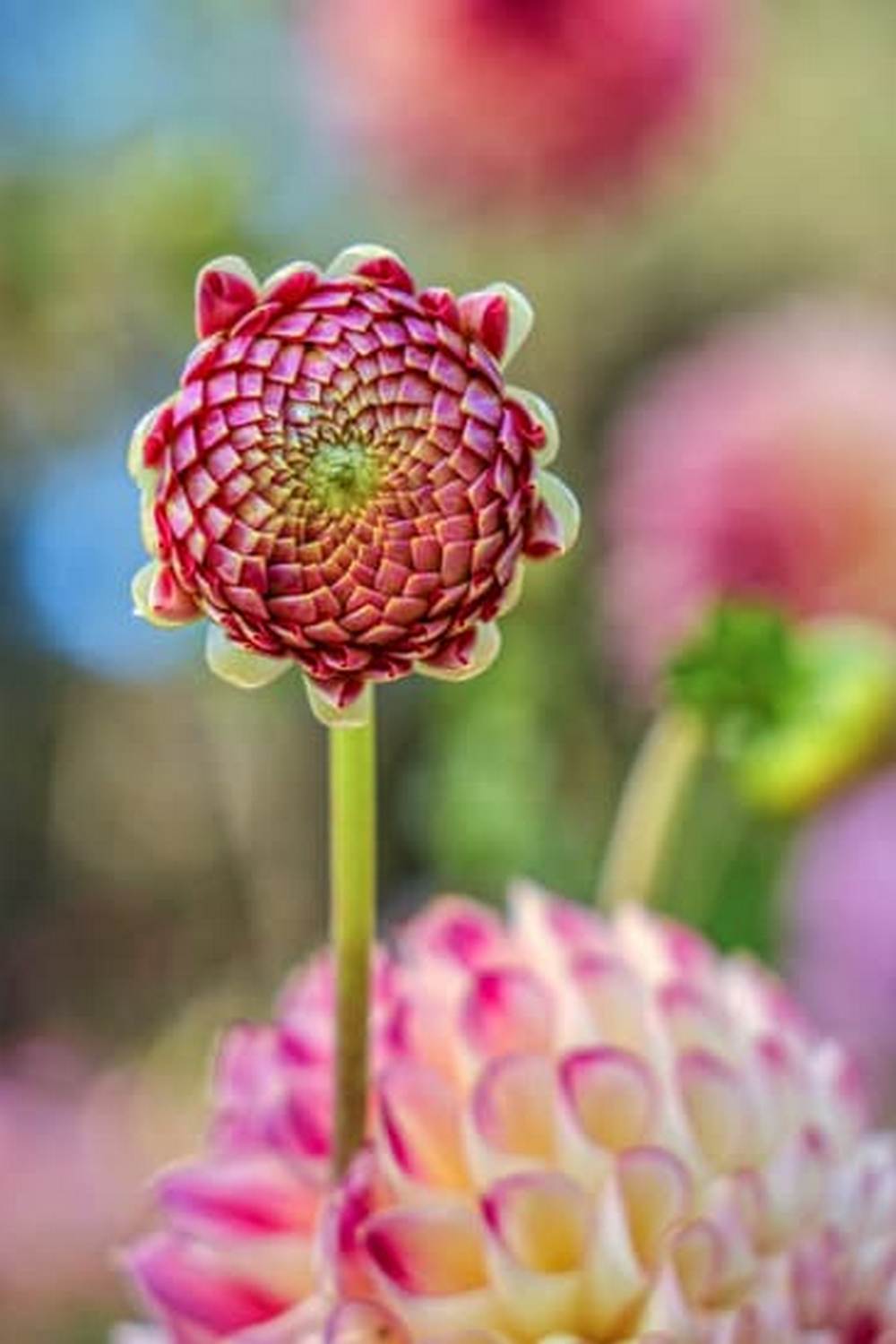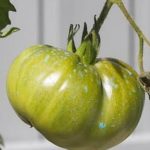Patches of wildflowers in vegetable gardens not only add natural beauty but also provide numerous ecological benefits. The integration of wildflowers into traditional garden spaces has become a growing trend, offering visual appeal and enhancing the overall sustainability of the garden. In this article, we will explore the various aspects of incorporating wildflowers into vegetable gardens, from choosing the right flowers to attracting pollinators and managing these patches effectively.
When it comes to choosing the right wildflowers for your vegetable garden, it’s essential to consider the types that thrive alongside common vegetables. Selecting wildflowers that complement the specific needs of your vegetable garden can contribute to a harmonious and thriving ecosystem. Planning and planting tips for wildflower patches are equally important, as strategic placement and soil preparation are crucial for successful growth.
Additionally, understanding the role that wildflowers play in attracting pollinators and beneficial insects is essential for improving garden productivity and biodiversity. By implementing best practices for managing and maintaining wildflower patches, they can coexist harmoniously with vegetable crops. Furthermore, delving into the ecological and environmental benefits of wildflowers sheds light on their positive impact on soil health, pest management, and overall garden sustainability.
Choosing the Right Wildflowers for Your Vegetable Garden
When it comes to choosing the right wildflowers to complement your vegetable garden, there are a few key considerations to keep in mind. Firstly, it’s important to select wildflowers that will thrive alongside the specific vegetables you are growing. This means taking into account factors such as light requirements, soil type, and water needs. Additionally, you’ll want to choose wildflowers that will provide benefits to your garden, such as attracting pollinators and beneficial insects.
Types of Wildflowers That Thrive Alongside Common Vegetables
Certain types of wildflowers are known to thrive alongside common vegetable crops. For example, marigolds are often planted in vegetable gardens because they can help repel pests and attract beneficial insects like ladybugs and hoverflies. Nasturtiums are another popular choice, known for their ability to deter pests such as aphids and whiteflies.
Tips for Selecting Complementary Wildflowers
When selecting wildflowers for your vegetable garden, it’s important to consider the specific needs of your garden space. Choose wildflowers that complement the growth habits and flowering times of your vegetables. Additionally, consider the height and spread of the wildflowers in relation to the surrounding vegetables to ensure they do not compete for space or resources.
By carefully choosing the right wildflowers for your vegetable garden, you can create a vibrant and diverse ecosystem that supports both plant growth and beneficial insect populations. The right selection of wildflowers can enhance the overall health and productivity of your garden while adding a beautiful touch of nature to your growing space.
Planning and Planting Tips for Wildflower Patches
When incorporating patches of wildflowers in vegetable gardens, careful planning and strategic planting are essential for successful cultivation. Choosing the right location within the garden is crucial, as wildflowers require adequate sunlight and well-drained soil to thrive. In addition, considering the specific needs of different wildflower species and how they complement the surrounding vegetable crops is important for a harmonious garden ecosystem.
Before planting wildflowers, it is crucial to prepare the soil properly. This may involve removing any existing vegetation, tilling the soil, and adding organic matter to enhance fertility. Ensuring that the soil pH levels align with the requirements of both wildflowers and vegetables is also essential for successful coexistence.
Strategic placement and spacing of wildflower patches within the vegetable garden is another key consideration. Integrating them along garden borders or between rows of vegetables can create a visually appealing and ecologically beneficial landscape. Additionally, staggered plantings throughout different areas of the garden can help attract pollinators to various locations.
Overall, thoughtful planning and careful planting techniques are vital when it comes to incorporating patches of wildflowers in vegetable gardens. By creating an optimal environment for both wildflowers and vegetables to thrive, gardeners can enjoy a beautiful and diverse garden space while supporting local ecosystems and biodiversity.
| Wildflower Planting Considerations | Importance |
|---|---|
| Choosing appropriate location within the garden | Crucial for sunlight and soil drainage |
| Preparing the soil | Enhancing fertility through organic matter |
| Strategic placement and spacing | Creating visually appealing landscape and attracting pollinators |
Attracting Pollinators and Beneficial Insects
Enhancing Biodiversity in Your Garden
When incorporating patches of wildflowers in vegetable gardens, one of the key benefits is the attraction of pollinators and beneficial insects. By planting a variety of native wildflowers, gardeners can create an inviting environment for bees, butterflies, and other essential pollinators.
These insects play a crucial role in the pollination process, ultimately leading to increased fruit and vegetable yields. Additionally, beneficial insects such as ladybugs and lacewings are attracted to wildflower patches, offering natural pest control by preying on harmful garden pests like aphids and caterpillars.
Choosing the Right Wildflowers to Attract Pollinators
Selecting the right wildflowers is essential for attracting a diverse array of pollinators and beneficial insects. Flowers such as bee balm, coneflowers, and lavender are known for their appeal to bees and butterflies.
Including these varieties alongside your vegetable crops can help ensure robust pollination and natural pest management within your garden. It’s important to research the specific needs and preferences of local pollinator species when choosing which wildflowers to plant, as different regions may have distinct insect populations that rely on specific flowers for sustenance.
Fostering Garden Biodiversity
By creating an environment that entices pollinators and beneficial insects, gardeners can contribute to overall biodiversity within their vegetable gardens. The presence of diverse plant species not only adds aesthetic beauty but also supports a healthy ecosystem where various organisms thrive.
As these insects visit the wildflower patches, they also benefit from nectar sources while contributing to the well-being of the entire garden. Ultimately, integrating wildflowers into vegetable gardens promotes harmony between cultivated crops and local wildlife while enhancing productivity and ecological balance.
Managing Wildflower Patches in Vegetable Gardens
Patches of wildflowers in vegetable gardens can add a stunning visual dimension to your garden while providing essential ecological benefits. However, it’s important to manage and maintain these wildflower patches to ensure they coexist harmoniously with your vegetable crops. Here are some tips for managing wildflower patches in your vegetable garden:
1. Strategic Placement: When integrating wildflowers into your vegetable garden, consider the strategic placement of these patches. Be mindful of the specific needs of both the wildflowers and the vegetable plants. For example, taller wildflowers should be placed at the back or sides of the garden to avoid shading smaller vegetables.
2. Soil Preparation: Before planting wildflowers, it’s essential to prepare the soil properly. Ensure that the area designated for the wildflower patch has well-draining soil and is free from competition with aggressive weeds. Amending the soil with organic matter can also enhance the growth of wildflowers.
3. Maintenance Practices: Regular maintenance is crucial for managing wildflower patches in vegetable gardens. This includes weeding to prevent wildflower overgrowth and ensuring that the growing conditions remain optimal for both wildflowers and vegetables. Additionally, consider implementing mulching practices to help maintain moisture levels and reduce weed competition.
By following these management tips, you can effectively incorporate and maintain patches of wildflowers in your vegetable garden, reaping their aesthetic beauty and ecological benefits while ensuring the productivity of your vegetable crops is not compromised.
The Ecological and Environmental Benefits of Wildflowers in Vegetable Gardens
The integration of wildflower patches in vegetable gardens not only adds to the visual appeal but also brings about a range of ecological and environmental benefits. The presence of these vibrant blooms can attract a variety of beneficial insects and pollinators, contributing to improved overall garden productivity. Additionally, the cultivation of wildflowers alongside vegetable crops can positively impact soil health and pest management, creating a more sustainable and balanced garden ecosystem.
There are several key ecological benefits associated with incorporating wildflowers into vegetable gardens. These blooms can act as natural attractants for pollinators such as bees, butterflies, and other essential insects. By attracting these pollinators, wildflowers play a crucial role in facilitating the reproduction and fruiting of vegetable plants, ultimately enhancing crop yields. Furthermore, the presence of diverse floral species encourages biodiversity within the garden environment, contributing to a healthier and more resilient ecosystem.
In addition to supporting biodiversity and pollinator populations, wildflowers offer valuable environmental benefits within vegetable gardens. Their deep root systems help improve soil structure and stability while increasing water infiltration and retention. This can lead to enhanced moisture levels in the soil, reducing the need for excessive irrigation and promoting greater overall sustainability.
Furthermore, certain wildflower species are known for their ability to naturally suppress weeds through competition, lessening the reliance on synthetic herbicides for weed control. Overall, integrating patches of wildflowers into vegetable gardens contributes to a more environmentally friendly and ecologically balanced approach to gardening.
- Attracting beneficial insects and pollinators
- Improving soil health through deep roots
- Natural suppression of weeds
Aesthetics and Design Considerations
The addition of wildflowers to vegetable gardens not only brings a touch of natural beauty but also offers various ecological benefits. One of the most visually appealing aspects of incorporating patches of wildflowers in vegetable gardens is the vibrant splash of color they provide. These colorful patches not only create a visually stunning garden but also attract beneficial insects and pollinators, contributing to the overall health and productivity of the garden.
When choosing wildflowers for your vegetable garden, it’s essential to consider the aesthetic appeal alongside their compatibility with the existing vegetable crops. Selecting a variety of native wildflowers that bloom at different times can ensure a continuous display of colors throughout the growing season, adding visual interest to the garden while supporting local ecosystems. Additionally, incorporating perennial wildflowers can create a more permanent and sustainable floral landscape within your vegetable garden.
The design considerations for integrating wildflower patches into vegetable gardens are crucial for creating an aesthetically pleasing and functional space. Proper placement and spacing of wildflower patches can enhance the overall layout of the garden while providing habitats for beneficial insects and pollinators.
Strategically placing these patches near vegetable crops can help attract pollinators, ultimately leading to improved yields. Overall, considering both functional and aesthetic aspects when planning and planting wildflower patches in vegetable gardens can result in a harmonious and visually appealing landscape.
| Aspect | Description |
|---|---|
| Visual Appeal | The vibrant colors of wildflower patches enhance the visual beauty of vegetable gardens |
| Biodiversity Support | Wildflowers attract beneficial insects and pollinators, which contribute to ecosystem health |
| Ecosystem Integration | Properly placed wildflower patches can create diverse habitats within the garden landscape |
Harvesting and Enjoying Wildflowers in Vegetable Gardens
In conclusion, the integration of patches of wildflowers in vegetable gardens offers a multitude of benefits, from enhancing the visual appeal of the garden to promoting ecological sustainability. By carefully selecting and strategically planting wildflowers that complement the specific needs of your vegetable garden, you can create a harmonious and thriving ecosystem that attracts pollinators and beneficial insects.
The coexistence of wildflowers and vegetable crops not only adds beauty to the garden but also contributes to improved soil health, pest management, and overall biodiversity.
Once the wildflowers have bloomed and thrived alongside your vegetables, there are various ways to enjoy their beauty beyond simply admiring them in the garden. Harvested wildflowers can be incorporated into home decor, floral arrangements, or even used in culinary endeavors. Their vibrant colors and fragrant blooms add a touch of natural elegance to any space, bringing joy and satisfaction to those who appreciate their diversity.
Ultimately, integrating patches of wildflowers into vegetable gardens is not only a visually pleasing choice but also an environmentally conscious one. It allows for a holistic approach to gardening that considers both aesthetics and sustainability. As such, considering the inclusion of wildflowers in your vegetable garden is an opportunity to cultivate beauty while contributing positively to your local ecosystem.
Frequently Asked Questions
Is It Good to Plant Wildflowers in Vegetable Garden?
Planting wildflowers in a vegetable garden can be beneficial for various reasons. Wildflowers attract pollinators, such as bees and butterflies, which can help improve the overall health and productivity of the garden.
What Vegetables Can You Plant With Wildflowers?
There are several vegetables that can be successfully planted alongside wildflowers. Some options include tomatoes, peppers, and lettuce. These vegetables can benefit from the presence of wildflowers by attracting beneficial insects and creating a more diverse ecosystem.
What Happens if You Plant Too Many Wildflower Seeds?
Planting too many wildflower seeds can lead to overcrowding and competition for resources among the plants. This can result in stunted growth, decreased flowering, and an overall less healthy wildflower patch. It’s important to follow recommended seeding rates to avoid these issues.

If you’re looking to get into vegetable gardening, or are just looking for some tips on how to make your current garden better, then you’ve come to the right place! My name is Ethel and I have been gardening for years. In this blog, I’m going to share with you some of my best tips on how to create a successful vegetable garden.





